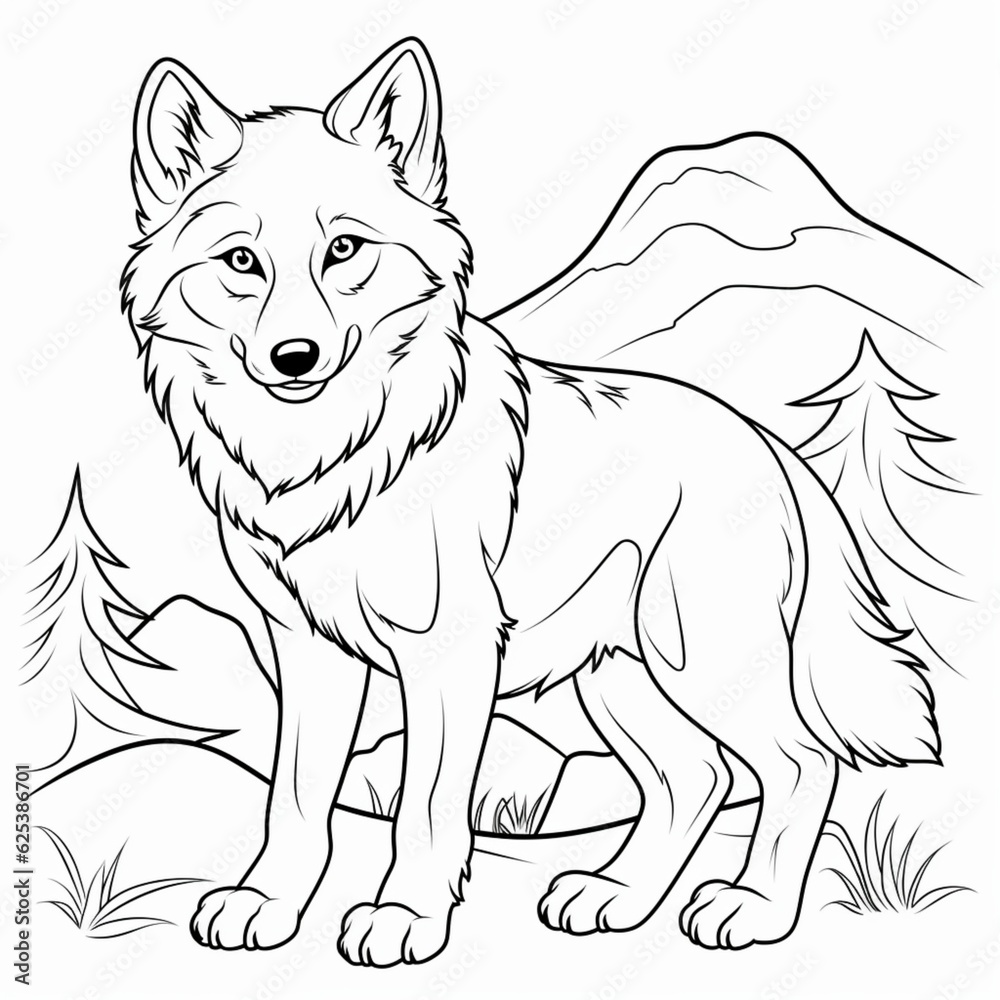Show me a picture of a wolf cut—you’ve probably come across this request online as this hairstyle has been taking the world by storm. The wolf cut, a fusion of the shag and bob, has become one of the most sought-after hairstyles in recent years. Its versatility and edgy appeal make it a favorite among trendsetters and celebrities alike. This article will delve into the origins, styling techniques, and tips for maintaining this iconic look.
As we dive deeper, you’ll discover why the wolf cut has gained so much popularity and how it can be tailored to suit different face shapes and hair textures. Whether you're looking for inspiration or practical advice, this guide will provide all the information you need to decide if the wolf cut is right for you.
From understanding its history to mastering the art of styling, this article aims to equip you with the knowledge to embrace this hairstyle confidently. So, let's get started and uncover the allure of the wolf cut.
Read also:Short Curly Knotless Braids The Ultimate Guide To Style And Maintenance
What is a Wolf Cut?
The wolf cut is a hairstyle that combines elements of the classic shag and modern bob. Characterized by its layered, textured appearance, this cut creates a voluminous and untamed look reminiscent of a wolf's mane. The layers are strategically placed to add movement and dimension, making it ideal for those seeking a low-maintenance yet stylish option.
Key features of the wolf cut include:
- Layered, choppy texture
- Face-framing bangs or fringe
- Length that falls between the chin and shoulders
- Versatility for all hair types
This hairstyle appeals to individuals who want a bold yet effortless look, and its adaptability makes it suitable for various occasions, from casual outings to formal events.
History and Origins of the Wolf Cut
The Rise of the Wolf Cut
The wolf cut first gained attention in the early 2000s but truly exploded in popularity during the pandemic era. As people spent more time at home, they sought creative ways to style their hair without frequent salon visits. The wolf cut's natural, textured appearance made it an ideal choice for those who wanted to maintain their hair's health while embracing a chic aesthetic.
Influencers and hairstylists on platforms like TikTok and Instagram played a significant role in popularizing the wolf cut. Their tutorials and before-and-after transformations demonstrated the cut's versatility and ease of maintenance, further fueling its appeal.
Why the Wolf Cut is a Trend
Its Appeal Across Demographics
One of the reasons the wolf cut has become a global phenomenon is its universal appeal. Celebrities such as Kendall Jenner, Billie Eilish, and Olivia Rodrigo have been spotted sporting variations of the wolf cut, bringing it into mainstream consciousness.
Read also:Unlock Your Potential The Journey From Ordinary To Alpha
According to a survey conducted by a leading hairstyling brand, the wolf cut saw a 300% increase in searches in 2022 alone. This surge in interest highlights its growing popularity across different age groups and demographics.
Who Should Try the Wolf Cut?
The wolf cut is suitable for almost anyone, regardless of hair type or face shape. However, certain factors can influence how well it suits an individual:
- Hair Texture: The wolf cut works exceptionally well on wavy and curly hair, as the layers enhance natural texture and movement.
- Face Shape: Individuals with round or oval face shapes often find the wolf cut flattering due to its ability to elongate and frame the face.
- Personal Style: If you're drawn to edgy, effortless looks, the wolf cut aligns perfectly with your aesthetic.
Consulting with a hairstylist can help determine if the wolf cut is right for you based on your specific needs and preferences.
How to Achieve the Perfect Wolf Cut
Step-by-Step Styling Guide
Achieving the wolf cut involves a combination of precision cutting and styling techniques. Here's a step-by-step guide to help you replicate this look:
- Start with Clean Hair: Wash and condition your hair to remove any product buildup.
- Section Your Hair: Divide your hair into manageable sections for even layering.
- Layer Strategically: Use a cutting technique that creates choppy, uneven layers for added texture.
- Add Bangs: Incorporate face-framing bangs or a fringe to complete the look.
- Style with Products: Apply a sea salt spray or mousse to enhance volume and definition.
For best results, consider visiting a professional hairstylist experienced in creating wolf cuts. They can tailor the cut to suit your unique features and hair type.
Styling Tips for Maintaining the Wolf Cut
Products and Tools You Need
Maintaining the wolf cut requires minimal effort but relies on the right products and tools. Here are some recommendations:
- Sea Salt Spray: Adds texture and volume, perfect for achieving a beachy, undone look.
- Mousse: Provides hold and enhances curls or waves.
- Hair Dryer: Use a diffuser attachment to dry hair gently without disturbing its natural texture.
- Texturizing Spray: Adds grit and definition, ideal for creating a more edgy appearance.
Experimenting with these products can help you find the perfect balance for your wolf cut, ensuring it stays fresh and stylish.
Common Misconceptions About the Wolf Cut
Despite its popularity, the wolf cut is often misunderstood. Here are some common misconceptions and the truth behind them:
- Myth: The wolf cut is only for short hair.
Truth: While the cut typically falls between chin and shoulder length, it can be adapted for longer hairstyles as well. - Myth: It requires daily styling.
Truth: One of the wolf cut's greatest advantages is its low-maintenance nature. A few spritzes of sea salt spray and a quick dry are usually sufficient. - Myth: It doesn't suit curly hair.
Truth: On the contrary, the wolf cut enhances curly hair's natural texture, making it an excellent choice for those with curls.
Understanding these misconceptions can help you make an informed decision about trying the wolf cut.
Cost and Maintenance of the Wolf Cut
Factors Affecting Pricing
The cost of a wolf cut can vary based on several factors:
- Salon Location: Urban areas tend to have higher pricing due to increased overhead costs.
- Stylist Experience: More experienced stylists may charge a premium for their expertise.
- Hair Length: Longer hair requires more time and effort to cut, which can affect the final price.
On average, a wolf cut can range from $50 to $200, depending on these factors. Regular trims every 6-8 weeks are recommended to maintain its shape and prevent split ends.
Alternatives to the Wolf Cut
Other Trendy Hairstyles to Consider
If the wolf cut isn't quite right for you, there are several other trendy hairstyles worth exploring:
- Shag Cut: Similar to the wolf cut, the shag features layered, textured strands but is often shorter and more structured.
- Bob Cut: A classic choice that offers versatility and elegance, available in various lengths and styles.
- Textured Pixie: Ideal for those seeking a bold, short hairstyle with a touch of edge.
Discussing these options with your hairstylist can help you find the perfect style to complement your personality and lifestyle.
Conclusion: Is the Wolf Cut Right for You?
In summary, the wolf cut is a versatile, low-maintenance hairstyle that combines the best elements of the shag and bob. Its popularity stems from its ability to enhance natural hair texture while providing a chic, effortless look. Whether you're drawn to its edgy appeal or its adaptability, the wolf cut offers something for everyone.
We encourage you to share your thoughts and experiences in the comments below. Have you tried the wolf cut? What did you love or dislike about it? Additionally, explore our other articles for more hairstyling tips and trends. Remember, embracing your unique style is all about confidence and self-expression. Show the world your inner wolf today!
Table of Contents
- What is a Wolf Cut?
- History and Origins of the Wolf Cut
- Why the Wolf Cut is a Trend
- Who Should Try the Wolf Cut?
- How to Achieve the Perfect Wolf Cut
- Styling Tips for Maintaining the Wolf Cut
- Common Misconceptions About the Wolf Cut
- Cost and Maintenance of the Wolf Cut
- Alternatives to the Wolf Cut
- Conclusion: Is the Wolf Cut Right for You?


